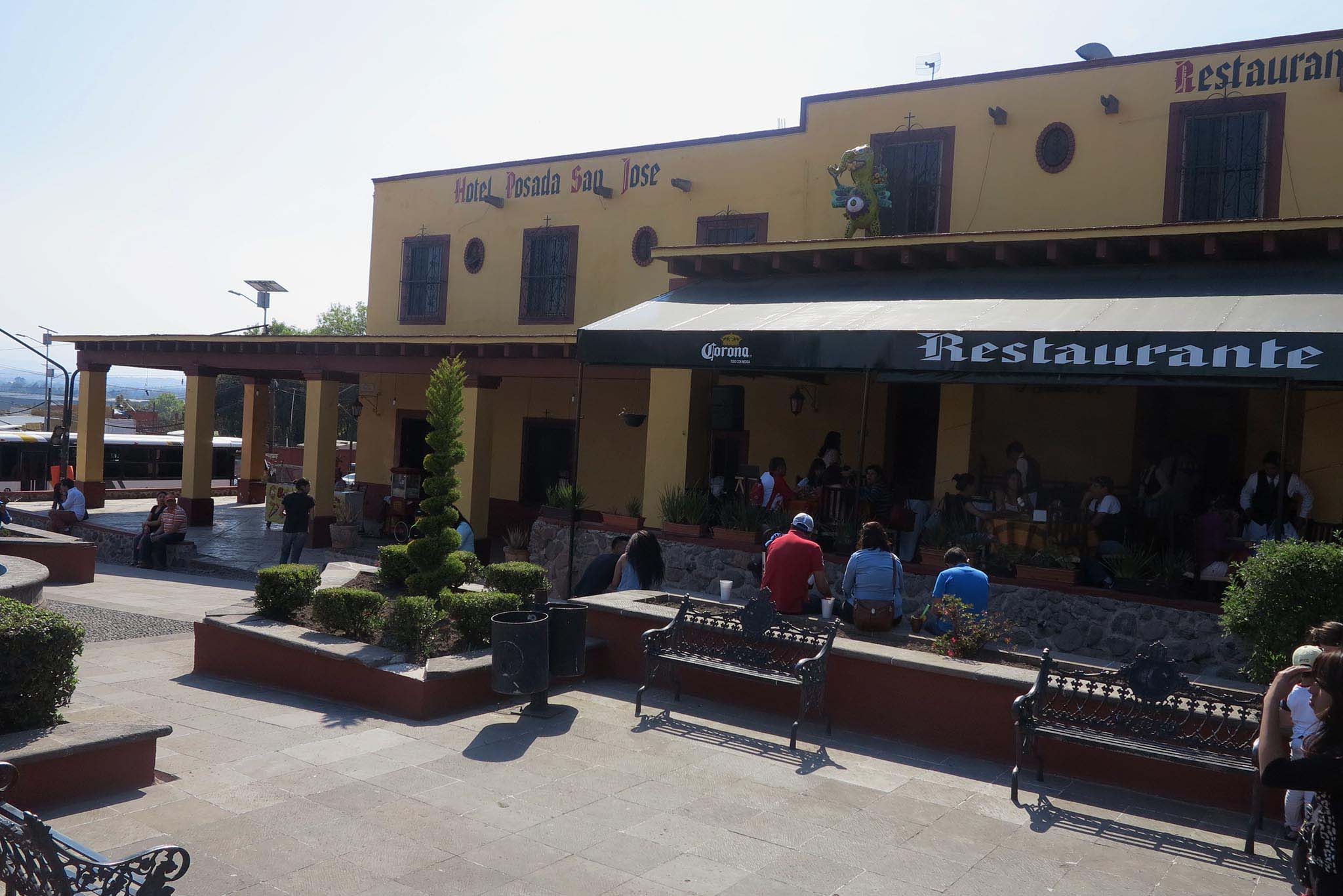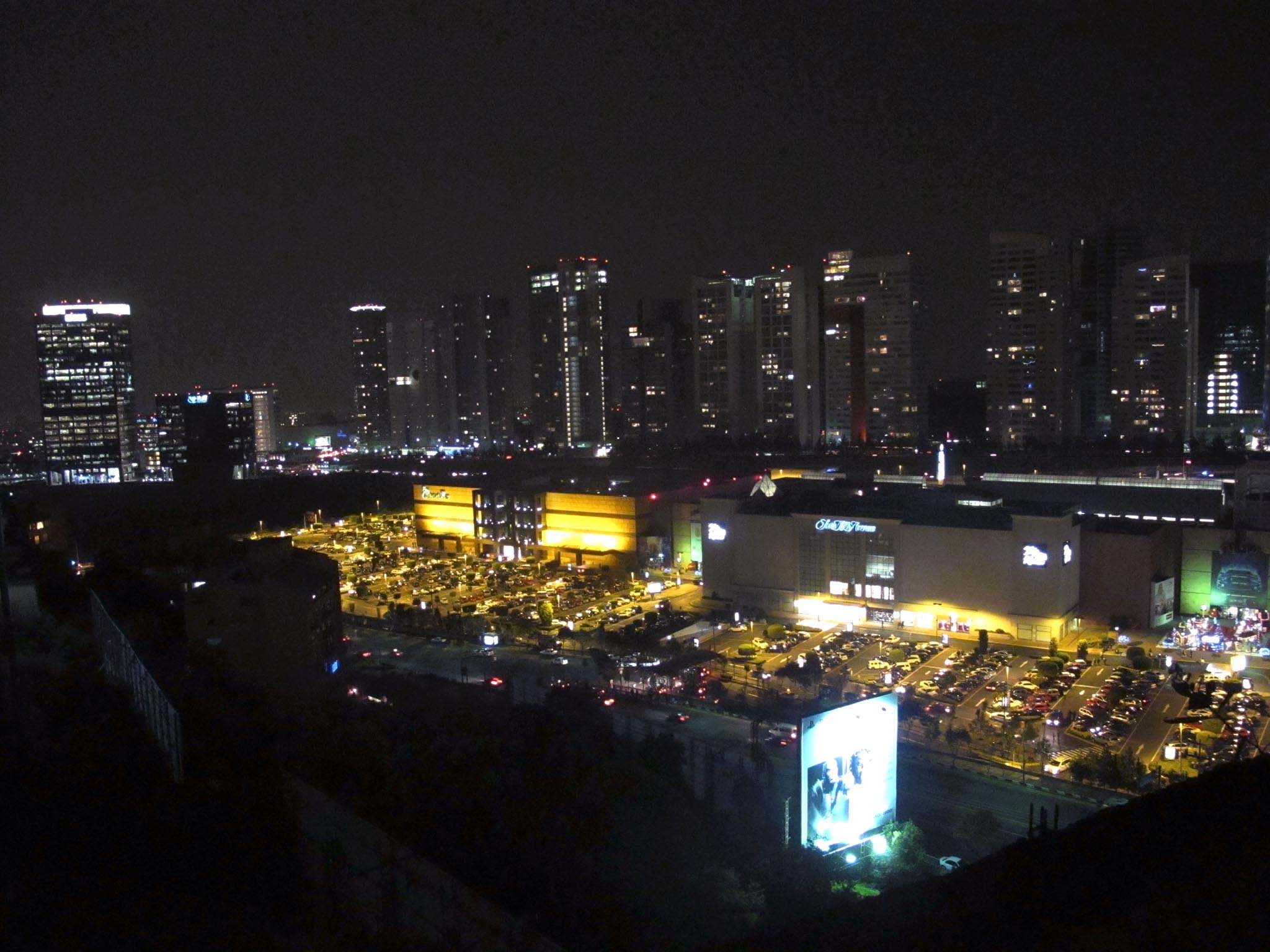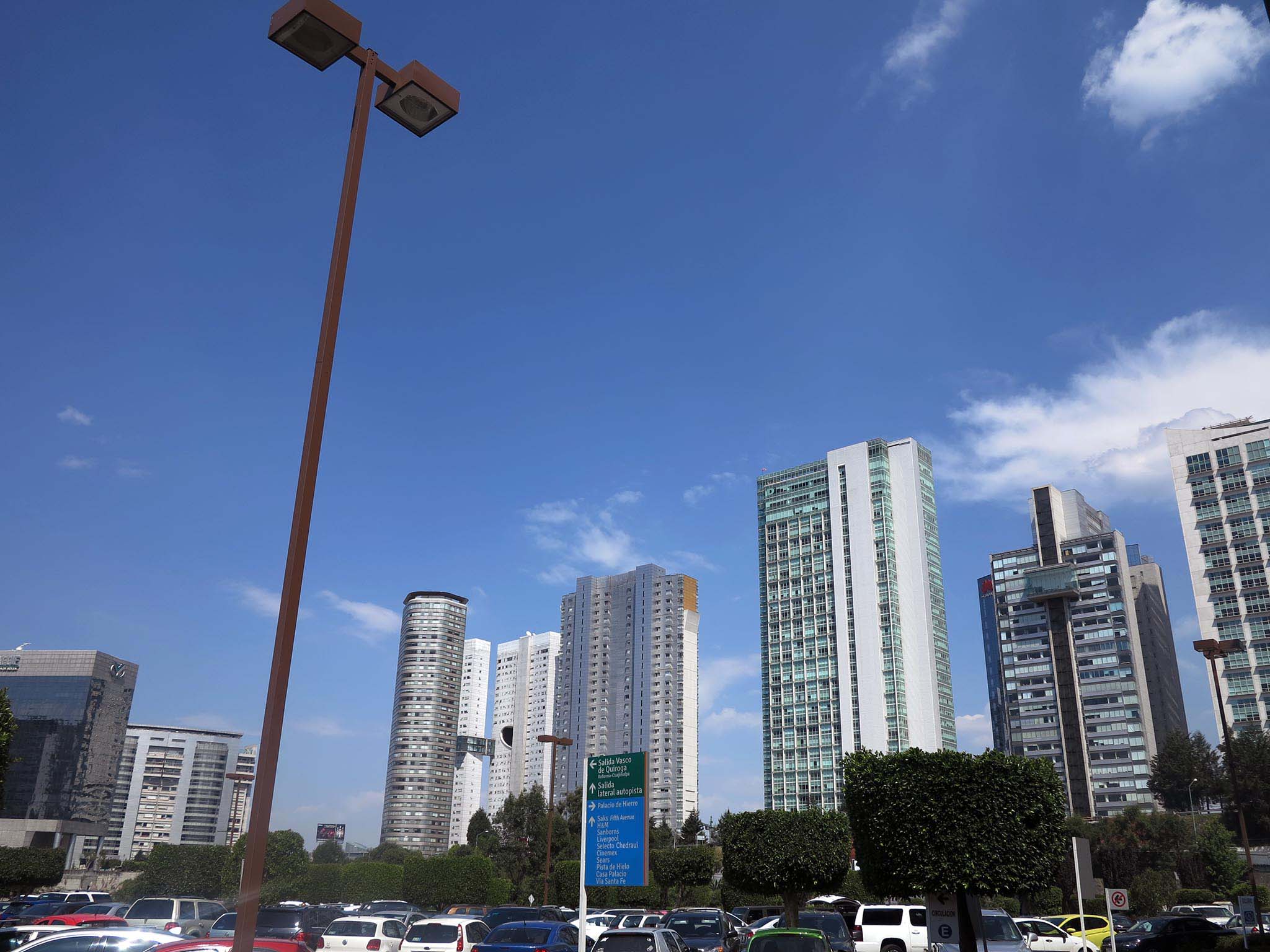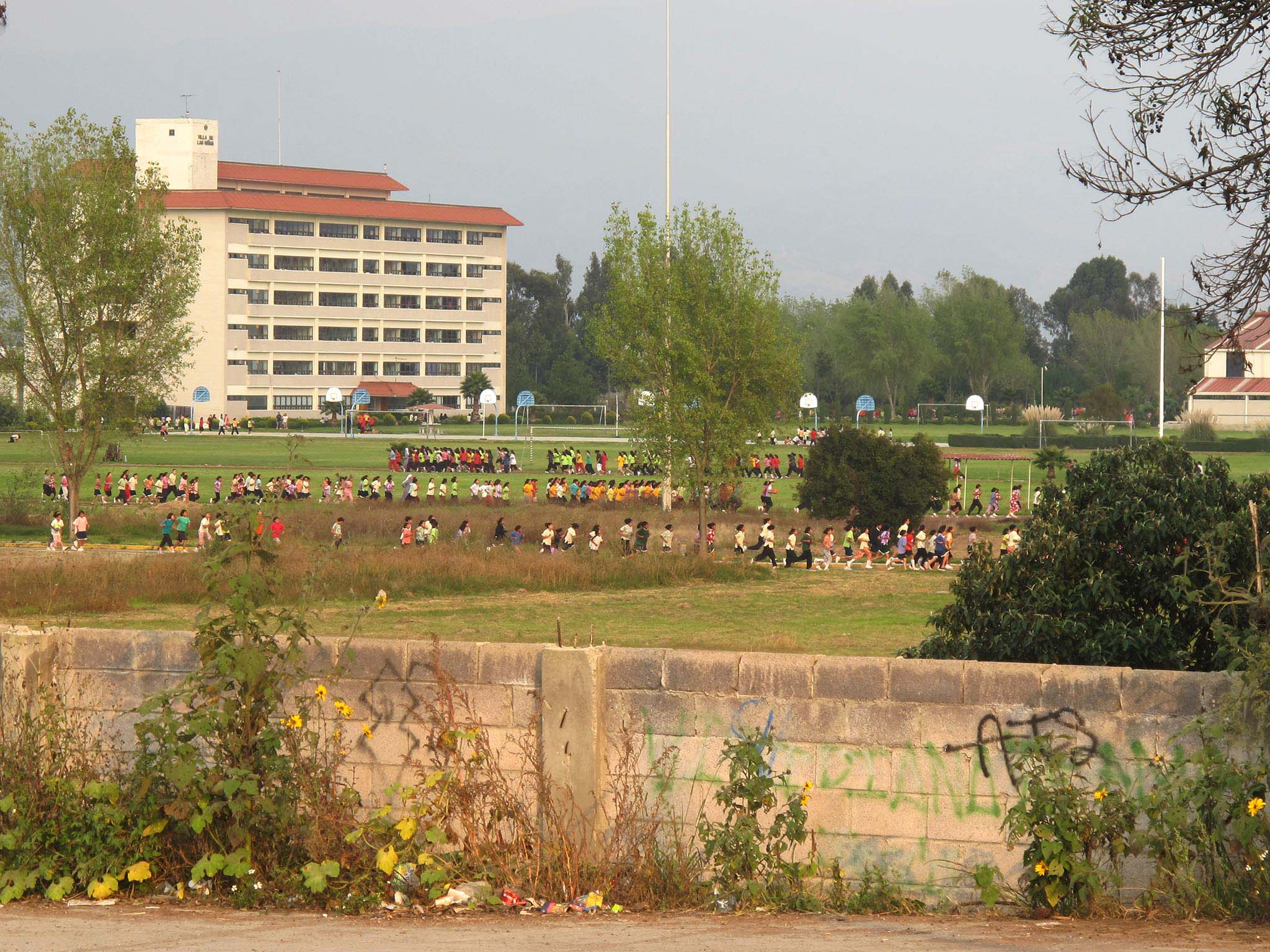Introduction
Building styles on the edge of the city tend to be either very old or very new, going from the hacienda economy and colonial villages to new social housing complexes. The edge of the city is almost always a work in progress, which is why it often looks like a construction site with mounds of rubble and rutted dirt roads. This is the case for both formal and informal development. However in the case of informal development this is less clear and it can seem that neighborhoods are simply in a ruinous state when in reality they are just under construction. Self-built neighborhoods have an enormous variety of buildings. Oddly it is precisely the combination of so many different forms which leads to the appearance of chaos and sameness.

Social housing units – San Buenaventura, Iztapaluca
The periphery of Mexico City is filled with social housing units, row after row of tiny, identical houses behind walls and fences. There are basically two kinds of social housing units, vertical ones consisting of apartments stacked on top of each other and horizontal ones consisting of small houses. According to the Secretaria de Desarrollo Agrario, Territorial y Urbano 25% of the population of the Federal District lives in social housing units. The State of Mexico has even a higher percentage and San Buenaventura in Iztapaluca was once billed as the largest social housing unit in Latin America.
These houses are usually bought by way of a mortgage payments – meaning that they are occupied by people working in the formal economy. Often they are occupied by young families. As more children are born the house turns out to be too small. Enlarging these houses is often prohibited due to the detrimental effect it might have on the clean-cut appearance of the complex. Nonetheless in one-story houses this injunction is often ignored, the complexes slowly gain the appearance of self-built housing as enlargements cover the original structure. Multiple story condominiums however are impossible to enlarge. Too many children in too small a house leads to the children growing up on the streets, and often in the social housing units there are no activities or spaces for children.

The first social housing units in Mexico City were the Miguel Aleman in the Benito Juarez Delegation which was built in 1949 and the Santa Fé IMSS social housing unit built in 1958 – both designed by famed architect Mario Pani. Both of the building sites were on the edge of the city at the time of their construction, showing the tendency of such large complexes, using economies of scale to be built outside of the city.
The San Buenaventura complex in Iztapaluca lies on the easternmost edge of the megalopolis. It takes about 2 1/2 hours to get to Mexico City’s center where jobs are. These vast distances imply that heads of families are perpetually either working or in traffic. Such conditions have led the government to prohibit the building of social housing units so far out of the center, a heavy blow to developers such as Urbi and Casas Geo who had already made heavy investments in land beyond the city’s edges.
Colonial building

The city grew from the lake-island Tenochtitlan over the lakebeds during the colonial period. You can tell when the city once again reaches the edges of the lake where pre-existing indigenous settlements existed by the names of the old villages; Iztapalapa, Coyoacan, Tlalnepantla, Azcapotzalco. Iztapalapa could never be in the Mexico’s Benito Juarez district, because that was all lake before the conquistadores came.
It is not strange to find an ancient colonial church and square with a kiosk surrounded by the megalopolis in the city’s periphery. One of the most famous is the convent of San Francis Xavier on the municipal square of Tepotzotlán. For the indigenous stonecutters, used to working with stone tools on hard, volcanic rock, the use of metal tools after the Spanish conquest was a revelation. It made cutting stone seem like cutting butter. This exuberance and ease seems present in the baroque curls of Tepotzotlan’s churrigeresque façade.

The basic structure of a village or neighborhood is market, church, square and municipal buildings. You can tell the difference between the new municipalities which were founded on uninhabited former lakebed such as Ciudad Nezahualcoyotl and Valle de Chalco precisely because the municipal buildings and square are not accompanied by a church.
One of the main characteristics of colonial construction is the fortress-like appearance of the buildings, each one made to withstand a siege. And somehow there seems to be some strange continuity in this. Though one may see a garden in front of a house in a 20th century, suburban, upper-middle class neighborhood, neither in colonial parts of the city or in the self-built housing in the periphery will you see a garden in front of a house. If Mexican building-style has a constant it is the façade built up against the sidewalk.
Informal Housing

About 60% of construction in Mexico is informal or irregular, meaning that some regulation has been broken. Of these a significant portion are the self-built houses of the colonias of the periphery. These houses can take all kinds of shapes, from shack to castle. Inevitably they are perpetually under construction with iron rebar sticking out from the roof to form the basis of new construction. Often empty plastic bottles are put on the end of the rebar, supposedly to stop lighting from striking them.
The cumulative effect of all this half-built individualism, especially with lackluster public works, dirt roads, broken drainage pipes, spider webs of electricity cables, broken sidewalks and so on, is a chaos. The fact that the cinder-blocks used for construction are porous and expensive to paint does not help the appearance of these neighborhoods.
These houses grow from tents and shacks, to large cement and brick structures up to four stories high over the course of twenty to thirty years, housing large extended families. The cornerstones of irregular building are the water tank and the septic tank making independent living possible, since trucks with water fill the former. Hopefully someday in the future a water capture system will also be part of this array.

Each room or floor added to a house increases its value and so building can even be seen as a form of saving, though it seems that self-built houses in irregular settlements are rarely sold, probably due to problems with the deed on the one hand, and on the other people feel very attached to a house they themselves have built, as if the house becomes a part of them. In many ways the house is a symbol of achievement showing how far one has come from humble beginnings. As you walk through it in middle age it whispers to you who you are and who you will be for your family after you are gone.
The truly sad informal neighborhoods are not the shacks of cardboard or one-story hovels, but the three story houses in badly located neighborhoods where the houses have stopped growing and there are now no opportunities.
Corporate building – Santa Fé

Built in former quarries, which in turn were converted into garbage dumps Santa Fé is made by and for corporations, a corporate fortress in the mountains between Mexico City and Toluca. If any place in Mexico City truly reflects the corporate soul this, for better or worse, must be the one. For starters Santa Fé was a very profitable real estate deal, being built on a garbage dump and now boasting some of the most expensive office space in Mexico. How sustainable it is in the long-run still remains to be seen. It is surprisingly easy to have conversations with people who hate going to Santa Fé. And sometimes it seems like everybody hates going to Santa Fé. And this says something important about the city it is in, Santa Fé is not practical, it is powerful symbolically.
And so it is probably not surprising that the sidewalks and public spaces are not very well maintained or prominent. Yet the architecture of buildings such as Grupo Bimbo’s prize-winning marble corporate offices is impressive. Skyscrapers built in ravines or on hilly ridges form an imposing presence.

Yet getting to Santa Fé is difficult and getting around Santa Fé without using a car is complicated. The whole Santa Fé experience was built with the philosophy of a gated community which one never would have to leave, with all the finest shops and restaurants, the largest mall of Latin America, modernist apartments and of course the finest corporate headquarters. In the end Santa Fé’s momentary success seems driven more by the symbolism of power than any practical use.
Modern consumer society is driven by the construction of a personal identity by way of brands. This identity is about being seen by others – appearances. Always try to appear to be more than you are, which on closer observation gives an appearance of fakeness. And that is Santa Fé’s problem. Everything looks great from a distance. But when you look more closely the plants in the lobby are made of plastic or what appears to be wood is in reality vinyl. The park-like space between the buildings is in reality only meant to look like a park and not be used as one. Nobody uses the sidewalks and they are neglected. According to one expert occupancy of apartments in Santa Fé is nowhere near the official numbers, leading her to suggest that money laundering might explain the gap. Santa Fé is a bubble in more than one sense of the word.
Gated Communities and luxury developments

Gated, luxury communities are almost completely absent from the whole east side of the megalopolis. Acozac by a golf-course in Iztapaluca with a pyramid just next to it is the one low-key example on the city’s eastern edge. From Acozac northwards the next luxury neighborhood is in Coacalco. In this sense the east of the city has a very different development dynamic than the west, where luxury developments are relatively common on the edge, starting from Condado de Sayavedra southwards to Santa Fé.
Naturally there are wealthy people in the east of the megalopolis as well as in the west. But in the east wealth does not translate into luxury housing, rather individual houses can become very large and elaborate, while retaining something of the style of self-built housing. Architects do not seem to come into play. Or because the improvements are built over existing structures they hand is not so apparent. The people who become rich in the eastern part of the city do not seem to leave their neighborhoods.
Luxury neighborhoods in the hilly, wet, west of the city are full of trees, broad winding streets of impeccable black asphalt and manicured lawns. The gates of the luxury community keep people in as well as out. If there is one great fear among those with everything to lose, it is kidnapping. The walls are an advertisement. The gate tells you that it is dangerous out there. Its very existence proclaims its necessity and value. Yet precisely converts the luxury gated community in a very nice kind of open-air prison. The houses are generally fortress-like with high walls around them. All these gates and guardsmen give a sense of arrival when entering the buildings, as if these houses were metaphors for arrival in life, a sense of security, a sense of having it made. One of the most important motivators of human beings is the desire to be a part of something greater. In the case of these gated communities that something greater is the first world.

They are however empty of people, even if you could get beyond the gates. Because they tend to be purely residential they can boring, the only thing to do is go to the mall, the church or the country-club and golf-course. None of these is particularly exciting, though they do confer a genteel sense of community. And of gold-courses are the preferred stalking grounds of salesmen of all kinds who see the hefty membership fees as an investment in instant respectability. Even behind gates there are wolves.
